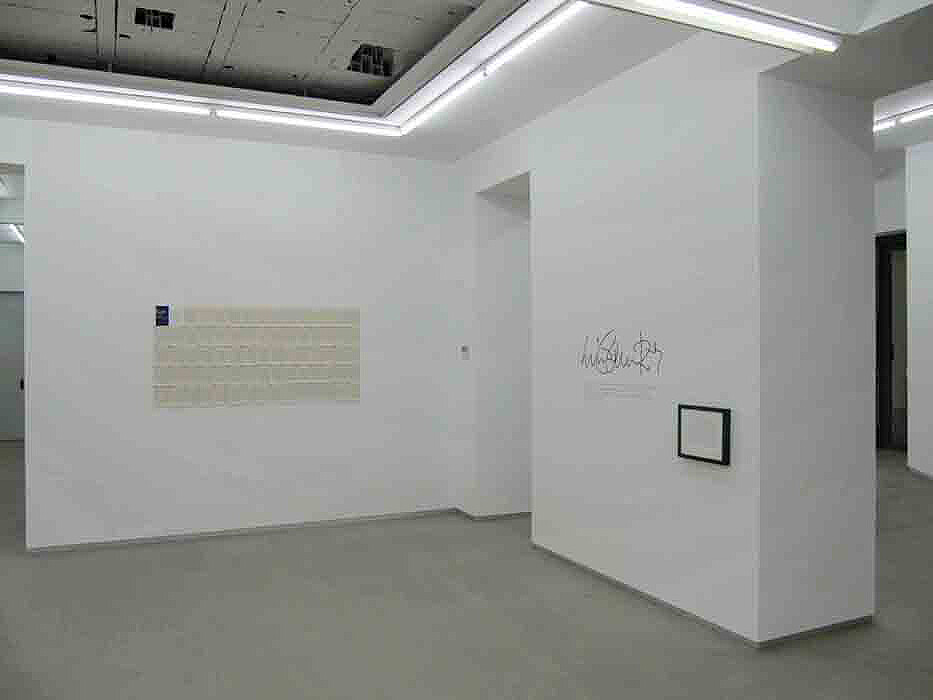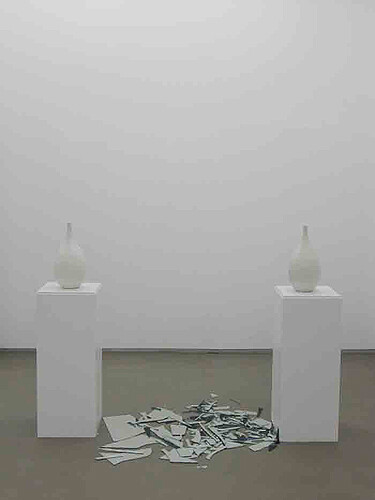After several years of teaching and working in printmaking, the Uruguayan artist Luis Camnitzer made what he considers to be his first conceptual piece. It was 1966: written in black plastic lettering over a white board, two sentences accosted the viewer, “This is a mirror. You are a written sentence.” Thus began Camnitzer’s enduring exploration of the symbolic qualities of the mirror. The piece also granted him entrance to the clique of emerging Conceptual artists—those exiled from South America in particular—that were gathering in New York, where he had moved to in 1964. Since then he has been something of an artist’s artist and a beacon for a younger generation of post-Conceptualists like Alejandro Cesarco or Stefan Brüggemann.
This relatively low profile seems to be changing at the not-so-tender age of 75. In 2011, Camnitzer had a survey exhibition at the Museo del Barrio in New York, which toured from the Daros Museum in Zurich. His show at Parra & Romero in Madrid marks his first solo show in Spain. The show is a tight retrospective of his long career through eight works, five of which are constructed around the figure of the mirror. Fittingly, the show’s title is “Reflejos y Reflexiones,” which, when translated from Spanish to English as “Reflections and Reflections,” becomes slightly ambivalent: “Reflejos” are reflections in the physical sense, while “reflexiones” are reflections in the meditative sense. This riddle has surely delighted Camnitzer, for whom word plays and linguistic puns are a key part of his practice.
El Reflejo (The Reflection, 1977) welcomes the viewer into gallery. A large text piece, which revolves around the nature of mirrors and how they affect space, has its exact reversed version on the opposite wall. The play on symmetry is repeated in the neighboring Combate (Fight, 2004), where two empty slide projectors face each other in a mechanic duel of light and sound. The projectors are separated by a dark glass reminiscent of either a tennis net (a barrier between opponents) or a two-way mirror protecting anonymous audiences during interrogations. The references to political repression, quite subtle in this work, materialize on a grander scale in the next room. Half the wall space is occupied by Memorial (2009), a reproduction of the Montevideo telephone book presented in 196 framed prints. In it, the names of Uruguay’s desaparecidos (the 300 plus political dissidents that “vanished” during the military dictatorship) have been meticulously inserted between the rows of surviving citizens. Though present in this custom-made directory, the desparecidos’ names are still invisible in that they are graphically indistinguishable from those still alive, signalling perhaps the futility of the artistic act in the face of such political and moral atrocities.
Also consisting of a series of prints on paper, Eco (2011) slices up a copy of Five Moral Pieces (1997) by Umberto Eco to then implement the re-assembling strategy of the Czech artist Jiří Kolář, whose existentialist deconstruction of texts and images is a strong point of reference for Camnitzer. At the far end of the second room, Homenaje a Mandrake (Homage to Mandrake, 2010) features two identical white vases on white plinths, separated by the scattered pieces of a shattered mirror. The title of the piece alludes to Mandrake, the Magician, the hero of a famous comic strip created by Lee Falk in 1934, when Camnitzer was only three years old. In one particular episode, following a plot worthy of Lewis Carroll or Jean Cocteau, Mandrake steps to the other side of a mirror to find all his friends and loved ones behaving like their evil twins and talking backwards.
Mandrake is puzzled and confused with this evil replica of his world and has to fight his way back to reality. This proves to be a fitting metaphor for one’s feelings after bumping into Camnitzer’s mirror tautology time and again, whereby repetition never amounts to simplicity, or to clarity. He forces us, rather, to look for meaning in the reflections. But if we go beyond the looking glass, there’s much more to reckon with.




